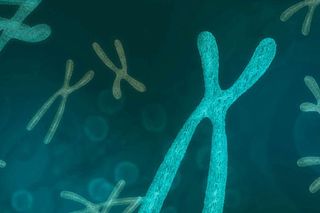
The Most Accurate Screening for Fetal Abnormalities Has Yet to Catch On. Why?
A high price point, low awareness and cultural attitudes combine to keep it out of the hands of most women.

Non-invasive prenatal screening or testing — NIPS or NIPT, for short – was heralded as a boon to women when it was first introduced commercially in 2011 in the United States. A vial of blood could, with more than 99 percent accuracy, tell parents-to-be whether a fetus carried genetic abnormalities that could make it unable to live, or able to live with serious difficulties, outside the womb.
Eight years later, NIPS is now a standard of care in most developed countries, but it has yet to take off in India, though it was introduced as a service in 2012. A high price point, lack of protocol and the potential for misuse combine to keep it out of the hands of most women.
*
NIPS works by isolating small bits of fetal DNA, known as cell free DNA (cfDNA) that circulate in the mother’s blood, and analyzing them for the most common chromosomal abnormalities related to miscarriage, and severe developmental delays and/or health problems after birth. Primarily, the test screens for Down syndrome (also known as trisomy 21), Edwards syndrome (trisomy 18) and Patau syndrome (trisomy 13), though some labs may offer additional screenings.
NIPS has an accuracy of greater than 99 percent. The only other options with more — 100 percent — accuracy are actual diagnostics, not screening: amniocentesis and chorionic villus sampling are invasive procedures that can put the pregnancy at risk.
The screening alternative – blood biomarker tests, which analyze for hormones in the mother’s blood associated with fetal chromosomal abnormalities, combined with sonography — has around a 96 percent accuracy, according to Mumbai-based OB/GYN Dr Kurush Paghdiwalla, who runs a private practice. This regimen can only be completed in weeks 11 to 14. NIPS, on the other hand, is typically performed earlier – in week 10 of pregnancy, though it can be performed (with less sensitivity) as early as week 7 or 8 – which offers women more options. Some may accept the risk; others may choose to abort. For the latter, that extra week or more could make a big difference. Abortion in the first trimester (before week 12) “can happen with tablets,” said Dr Devika Chopra, an OB/GYN with Hope Clinic in Mumbai. Whereas abortion in the second trimester is like a mini-labor. It’s “more risky,” she said, “more emotional as well as risky” with “more blood loss, more pain. [The] patient has to be admitted for a longer duration.”
*
“At present there is confusion about NIPT availability in India. Awareness about NIPT, its limitations, shortcomings is quite low in medical and general population,” said one Indian respondent to a 2015 global survey of clinicians about NIPS uptake.
Where there is awareness, access to NIPS is limited by geography. Most major urban centers, even T2 and T3 cities, would have at least one lab that offers the test, said Rakesh Sharma, a founder of Lilac Insights, a Mumbai-based lab that provides NIPS.
Related on The Swaddle:
More to Babies’ Sex Than X and Y Chromosomes, Researchers Say
But the cost is prohibitive. Until quite recently, no Indian labs had the capability to process NIPS locally, and most were shipped out of the country for processing in Spain or Hong Kong, at a price of roughly Rs 50,000. It’s only recently that domestic processing became available; Sharma said Lilac has offered domestic processing only within the last month. That shift has lowered prices by one-third to one-half – the test now runs Rs. 25,000-35,000 – but not by enough to be electively afforded by much of India’s middle class.
While the American College of Obstetricians and Gynecologists recommends every pregnant woman be offered NIPS, in India, the standard of care is determined by affordability. Some doctors prefer to run a much cheaper (Rs. 1,500-4,000) dual marker test combined with sonography, and then prescribe NIPS only if the results are questionable. But people who can afford it opt for NIPS directly, drawn by its higher accuracy. “During the course of counseling pregnant women in India regarding NIPS, it is frequently observed that they desire a 100% exclusion of abnormality,” wrote a team of India’s leading geneticists in 2017. Their article, published in the Journal of Fetal Medicine, explored the Indian context and implications of a 2016 update to NIPS guidelines from the American College of Medical Genetics.
That’s not what NIPS is for, said Dr Paghdiwalla. Indeed, there are two small studies that even suggest NIPS may be less accurate for South Asian women, as well as women who have conceived via IVF; neither are conclusive. Also, while the overall accuracy of NIPS is above 99 percent, its accuracy for each of the chromosomal abnormalities varies; one meta-analysis found NIPS 99.3 percent accurate in detecting Down syndrome, but 97.4 percent accurate in detecting Palau and Edwards syndromes, making NIPS still more sensitive than the blood biomarker tests-and-sonography combo, but by a slimmer margin.
“Offering these 100 percent babies, and 100 percent situations — I’m a little conservative on that,” Dr Paghdiwalla said.
Related on The Swaddle:
Should Parents Be Able to Tinker With the Genome of Babies Before They’re Born?
Another factor that may make doctors a little conservative toward NIPS: The test screens for sex chromosome abnormalities, and in doing so, reveals fetal gender. In 2014, clinics that shipped blood samples outside city limits for NIPS drew fire from the Municipal Corporation of Greater Mumbai, which ordered them to cease the practice because of its potential for misuse for prenatal sex selection. Maharashtra has a skewed sex ratio — 929:1000 according to the 2011 census, and “states with a higher number of registered prenatal diagnostic facilities per 100,000 women have a lower child sex ratio than states where these facilities are less available,” reported at 2013 article in the journal Genetics in Medicine. This move not unreasonably curtailed NIPS access in one of its biggest markets until labs could establish local processing capacity in accordance with the Pre-Conception and Pre-Natal Diagnostic Techniques (PCPNDT) Act, which prohibits NIPS reports from revealing gender to either the OB/GYN or to parents; sex chromosomes are simply reported as normal or abnormal.
*
In light of all of this, for some doctors, the cost-benefit of NIPS is unclear. Dr Paghdiwalla said he prefers offering NIPS only after an initial questionable blood biomarker test, or to high-risk (older) mothers – and even then, “if they are relaxed and their [biomarker] screening tests come in the low-risk zone, then they are happy not to have the NIPT, and I am happy not to recommend it very enthusiastically,” he said.
But with no standard of care, doctors disagree. Dr Chopra said NIPS is best, as long as the patient can afford it.
Much of pregnancy care is about minimizing risk to the fetus. NIPS, it seems, offers a slim but additional margin for minimizing risk to the mother as well. But numbers and odds can be confounding, and the professionals most able to help parents make sense of such percentages — and the price tags attached — are in short supply. The 2016 article about NIPS guidelines in the Indian context calls for pre-test genetic counselling, but notes genetic counselors are in short supply in India. This leaves many couples looking to doctors for advice only after receiving results, which they may or may not have been briefed to understand, or unaware that NIPS is an option at all.
But that may change, if affordability does, which Lilac’s Sharma said is inevitable: “Like anything else, as the technology becomes more accessible, newer, cheaper, more cost-effective ways of doing the test become available, [and] the prices will come down.”
Liesl Goecker is The Swaddle's managing editor.
Related


Brain‑Enhancing ‘Smart Drugs’ Promise a Boost in Creativity, Memory
